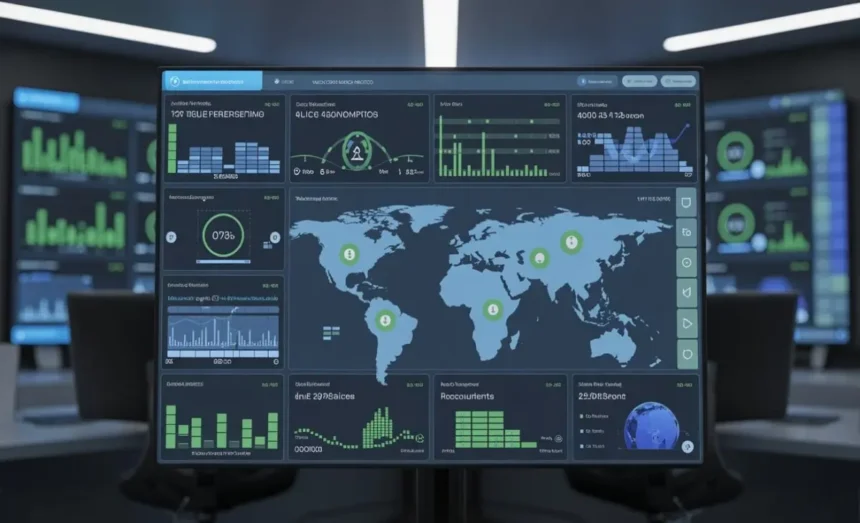As businesses expand across multiple locations, managing energy and resources effectively becomes a significant challenge. Inconsistent usage patterns, varying equipment efficiencies, and a lack of centralized oversight can lead to wasted resources and inflated operational costs. Developing a unified strategy to optimize energy and resource consumption is not just about saving money—it’s about building a more sustainable and resilient business. This post will guide you through practical steps to streamline usage, reduce waste, and improve your bottom line across all your sites.
Why Centralized Resource Management Matters
Operating multiple sites without a cohesive energy and resource strategy is like trying to fill a leaky bucket. Each site might have its own approach to managing electricity, water, and raw materials, leading to inefficiencies that add up quickly. A printing company, for example, might have one facility that powers down machinery at night while another leaves everything running, needlessly consuming electricity. Similarly, a restaurant chain could see significant variations in food waste from one kitchen to another.
These inconsistencies make it difficult to track performance, identify problems, and implement effective solutions. By centralizing your approach, you gain a clear, comprehensive view of your entire operation. This allows you to establish benchmarks, share best practices, and make data-driven decisions that benefit the entire organization. A unified strategy empowers you to spot anomalies, such as a sudden spike in water usage at one location, and address them before they escalate into larger issues.
Steps to Optimize Usage Across Multiple Sites
Implementing a multi-site optimization plan requires a structured approach. Here are key steps to get you started on the path to greater efficiency.
1. Conduct a Comprehensive Audit
The first step is to understand your current consumption patterns. A thorough audit across all your locations will provide the baseline data you need to identify opportunities for improvement. This process should involve:
- Gathering Utility Bills: Collect electricity, gas, and water bills from the last 12-24 months for each site. This data will reveal seasonal trends and highlight which locations are your biggest consumers.
- Inspecting Equipment: Assess the age and efficiency of key equipment, such as HVAC systems, lighting, refrigeration, and production machinery. Outdated or poorly maintained equipment is often a primary source of energy waste.
- Mapping Processes: Document the operational workflows at each site. Pay close attention to how resources are used in your core business activities, from manufacturing processes to daily administrative tasks.
2. Establish Clear Benchmarks and Goals
Once you have your audit data, you can set realistic and measurable goals. Benchmarking involves comparing the performance of your sites against each other and against industry standards. For instance, you could calculate the energy consumption per square foot or per unit of production for each facility.
This analysis will help you identify your top-performing sites, which can serve as models for others. Set specific, achievable targets for the entire organization, such as a 10% reduction in overall electricity consumption within the next year. Clear goals provide a common objective for all teams to work toward.
3. Implement Centralized Monitoring Technology
You can’t manage what you don’t measure. Investing in centralized monitoring systems, like smart meters and energy management software (EMS), is crucial for tracking real-time usage across all locations. These technologies offer a unified dashboard where you can view consumption data from every site.
This level of visibility allows you to:
- Identify Waste Instantly: Receive alerts for unusual consumption patterns, helping you quickly pinpoint issues like water leaks or equipment left running after hours.
- Track Progress: Monitor your performance against your established benchmarks and goals in real time.
- Engage Employees: Share data with site managers and employees to foster a sense of ownership and encourage them to contribute to conservation efforts.
4. Standardize Equipment and Practices
Promote consistency by standardizing energy-efficient equipment and operational procedures across all your sites. When it’s time to replace old machinery, choose energy-efficient models and make them the standard for all future purchases.
Create and distribute standardized operating procedures for common tasks. This could include guidelines for shutting down equipment, managing thermostat settings, and minimizing water usage. For complex operational challenges, particularly in regulated industries, consulting with a food and beverage regulatory consultant or a similar expert can provide specialized guidance to ensure compliance while optimizing resource use.
5. Foster a Culture of Sustainability
Technology and procedures are only part of the solution. Your employees play a vital role in the success of your resource optimization efforts. Engage your teams by:
- Providing Training: Educate employees on the importance of resource conservation and train them on new procedures and equipment.
- Encouraging Friendly Competition: Create incentive programs or friendly competitions between sites to see who can achieve the greatest reductions in energy or water usage.
- Sharing Successes: Regularly communicate progress and celebrate milestones to keep everyone motivated and engaged in the initiative.
Unlock Long-Term Efficiency and Savings
Optimizing energy and resource usage across multiple sites is an ongoing process, not a one-time project. It requires commitment, collaboration, and the right tools to succeed. By creating a unified strategy, you can turn a collection of individual sites into a streamlined, efficient, and sustainable organization. The benefits extend beyond cost savings, enhancing your brand reputation and positioning your business for long-term success. Start by auditing your current usage, setting clear goals, and empowering your teams to be part of the solution.







